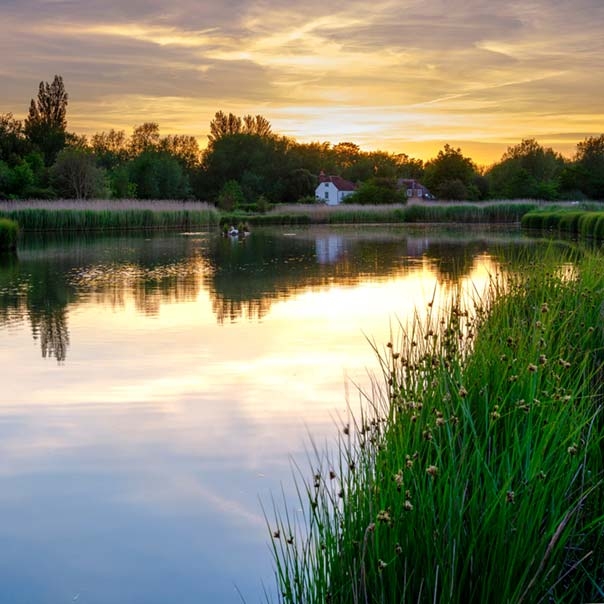Underwater invertebrates found in UK wetlands
Creatures of a world rarely seen, but all can be found in a garden pond. What will you find in yours?
Water beetles
Dytiscidae family
Hundreds of diving beetle species inhabit the UK. The largest is the great diving beetle. Green-black in colour, they feed on invertebrates, tadpoles and small fish. Look for them visiting the water’s surface to resupply air, which they store beneath their wing cases.
Their larvae look somewhat like dragonfly larvae but have smoother sides, two ‘tails’ and large obvious pincer-jaws.
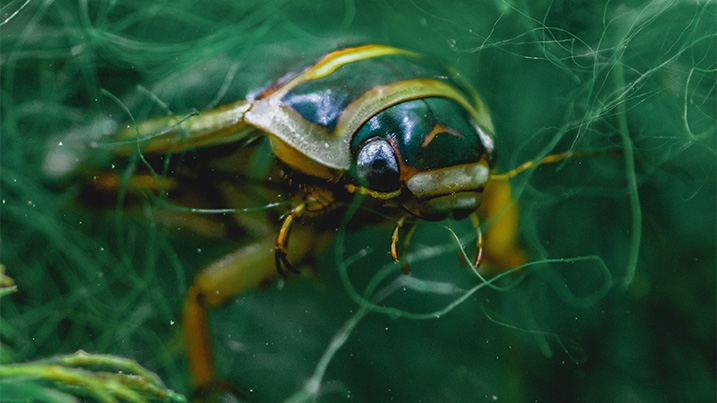
Whirligig beetle
Gyrinidae family
Most likely seen whizzing around on the surface of a pond, it’s a predator and a scavenger, eating smaller invertebrates. They have two pairs of eyes, one to look above the water’s surface, one below.
If they feel threatened from above, they can dive below the surface and carry a bubble of air with which to breathe.
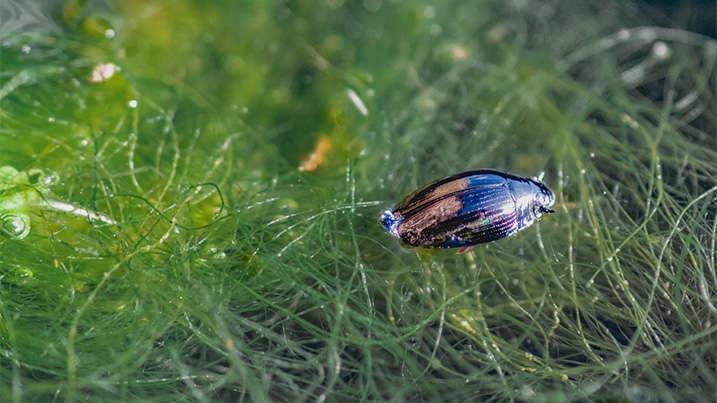
Pond skater
Gerris lacustris
Water-repellent hairs on the bottom of their feet allow them to literally walk on water. They’re good fliers and are one of the first invertebrates able to colonise a new pond.
They’re predatory, using a sharp beak to grab smaller invertebrates.
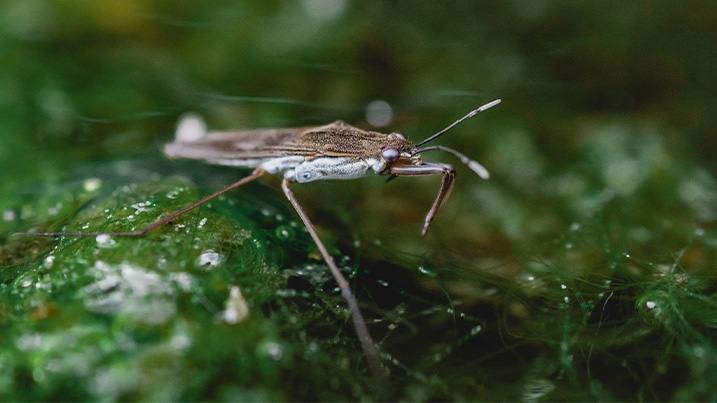
Backswimmer
Notonectidae family
Spending life upside-down just under the water’s surface, they row with oar-like legs to snatch prey as large as tadpoles and small fish. Like the pond skater, they are good fliers.
Be careful when pond-dipping; they can give a painful nip!
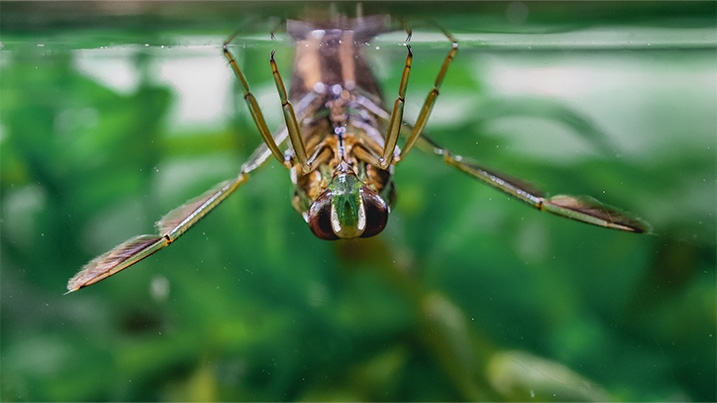
Lesser water boatmen
Corixa punctata
Looking similar to a backswimmer, the lesser water boatman swims near the bottom of the pond, with paddle-like arms protruding from underneath the body. Unlike many of our pond inhabitants, they’re herbivorous, eating algae and rotting plant material.
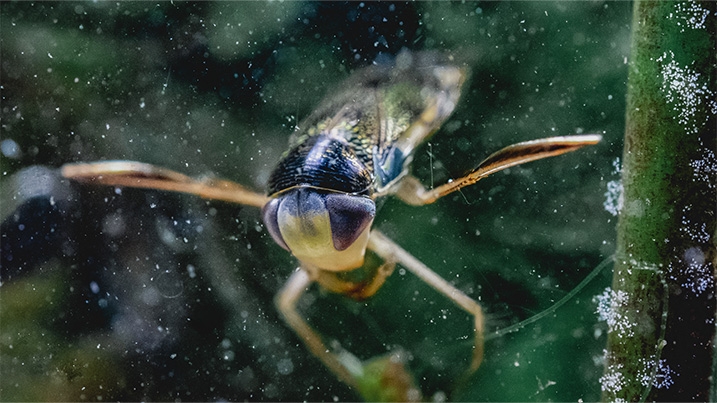
Pond snails
Lymnaeidae family
Varying greatly in size, there are around 40 different species of water snail in the UK. They feed on algae and rotting matter.
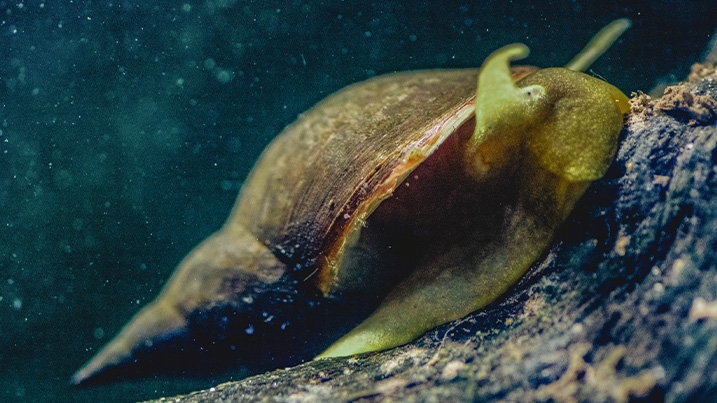
Water scorpion
Nepa cinerea
Easy to identify, this predator lurks in the weedy margins of ponds, capturing prey in its huge pincers. Their scorpion-like tail is not actually a sting, but instead protrudes above the surface of the water, used for breathing air.
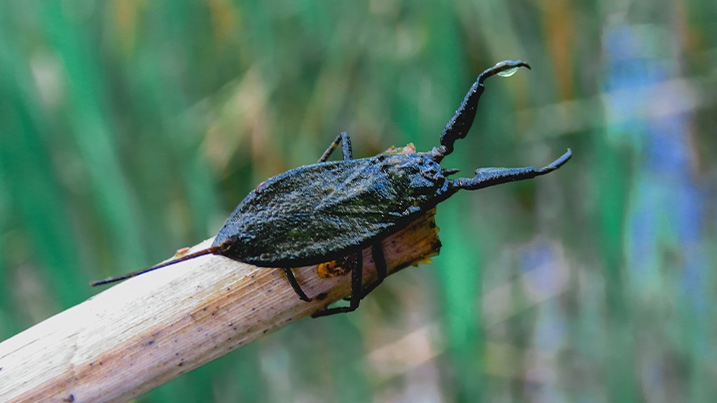
Dragonfly larvae
suborder Anisoptera
A voracious predator, hinged jaws lurch forwards to catch unsuspecting tadpoles and small fish. Some species can spend 2 years in this larval form before emerging as a winged adult.
Easily distinguished from damselfly larvae with a stocky body and no ‘tail’.
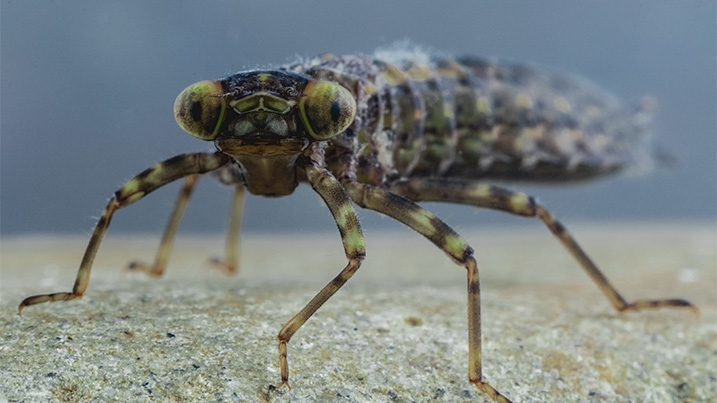
Damselfly larvae
suborder Zygoptera
Also a predator of other invertebrates, their slender body is on average around half the length of a dragonfly larvae. Most species sport three long, flattened ‘tails’ at the end of the abdomen.
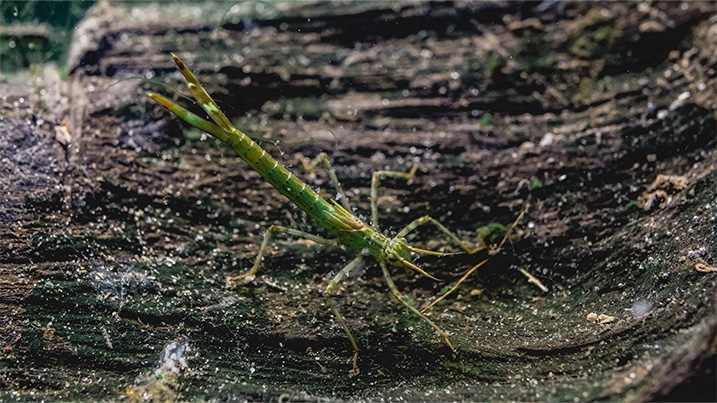
Caddisfly larvae
order Trichoptera
Most larvae of caddisfly species make a case around themselves, using small pieces of gravel or plant matter. These are wrapped in silk with the larvae using the case to pupate into the winged adult. They feed on algae and decaying plants.
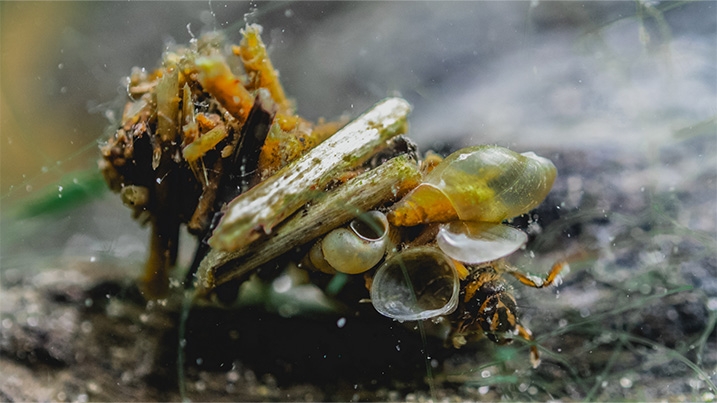
How WWT are helping
Restoring and building ponds across our landscapes is key to helping our insect life. As well as encouraging ponds to be created in residential gardens, we’ve been working to provide evidence of the benefits of farmland ponds. The Conservation Evidence team have been using historical maps to identify older, forgotten ponds and identify areas that are key to maintaining a healthy pond network. We have been providing guidance and funding for farmers interested in restoring and creating ponds on their land, and helping them to become advocates for nature-friendly farming.

